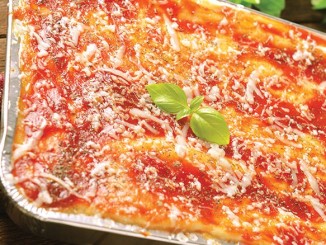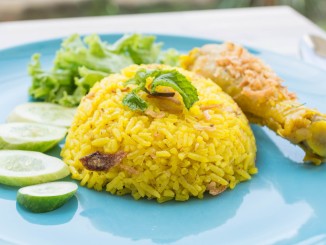
The popularity of frozen foods in the Scandinavian countries remains high, reports Jonathan Thomas
The Scandinavian countries have relatively small food and beverage markets compared with elsewhere in Western Europe, mainly as a result of their lower populations. Food and drink typically represents between 10% and 15% of total consumer expenditure in Scandinavia – in 2015, food sales were worth almost EUR100bn at the retail level, although this has changed little of late due to the mature state of the market and fairly sluggish economic growth. The region also has a well-developed foodservice industry.
Throughout Scandinavia, retail food prices are higher than elsewhere in Western Europe. Partly because of this, own-label groceries have made rapid gains in recent years – in volume terms, the share of the market taken by private label is now over 30% in both Sweden and Denmark. One other notable development has been the entry into the Swedish grocery market of the French frozen food retailer Picard, early in 2013. As of 2015, the company had 12 stores in Sweden, and is aiming for 50 at some point in the near future.
Sales of frozen foods within the Nordic countries remain sizeable, and per capita consumption levels have traditionally been high. In Sweden, for example, per capita consumption of frozen foods is worth an estimated 52 kg, equivalent to a market worth up to 500,000 tonnes. One of the reasons for this is the fact that most Scandinavian households contain a freezer, or a fridge-freezer.
Savoury Foods
Within the savoury frozen foods sector, current growth is thought to be highest in categories which address health concerns. It is mainly for this reason that sales of frozen poultry meat, fish and seafood and vegetables continue to increase – for instance, a 2014 survey carried out by Ernst & Young found that 31% of Nordic countries expect to increase their intake of fish over the coming years. Much of this growth is expected to occur at the expense of red meat, as poultry and fish become more popular protein sources.
Fish and seafood remains an important part of Scandinavian diets, and is also a source of income for some of the region’s countries. Norway is the world’s second largest exporter of seafood – in 2015, export value rose by 8% to NOK74.5bn, according to the Norwegian Seafood Council. Seafood exports to the EU hit NOK50bn for the first time, with Denmark the second largest individual market (trailing only Poland). In Sweden, volume sales of frozen fish fillets are now worth around 38,000 tonnes, or 4 kg per capita. Value-added frozen products such as coated fish portions are a current growth area across much of the region.
Household penetration of frozen convenience foods is also on the high side across much of Scandinavia, as is illustrated by the success of the Findus brand. Both ready meals and pizza are popular with Nordic consumers – in Norway, for example, volume sales of frozen pizza are worth in the region of 25,000 tonnes per annum, equivalent to 5.5 kg per capita. To further illustrate the popularity of pizza, Domino’s invested GBP24m in June 2016 to increase its stakeholding in Norway, Sweden and Iceland.
The Scandinavian ready meals market has grown steadily over the last few years, driven by the rising number of single-person households – for example, approximately half of all Swedish households contain just one person. Another reason for the recent growth in demand is the desire of many consumers to experience new tastes and cuisines, with Mexican and Tex-Mex dishes performing well in the region. However, health concerns remain a leading consumer concern, a factor manufacturers are having to address in order to maintain interest in the category.
Ice Cream
Somewhat surprisingly, per capita consumption of ice cream is very high in the Scandinavian countries. This is chiefly because ice cream is a popular dessert and treat across the region, as well as the fact that consumption is not so heavily skewed towards the warmer months of the year, as is the case elsewhere in Europe.
As can be seen from Table 1, per capita consumption of ice cream is highest in Finland, at 14 litres. This decreases to around 12 litres in Sweden, and approximately 10 litres in both Denmark and Norway. These figures are comfortably the highest in Western Europe, ahead of Ireland (8.5 litres) and Italy (8 litres). By way of comparison, per capita consumption of ice cream increases to more than 28 litres in New Zealand, and around 21 litres in the US.
With consumption worth an estimated 115 million litres, Sweden has Scandinavia’s largest ice cream market. Volume sales drop to less than 100 million litres in the remaining three countries, but this can be attributed to their relatively small populations.
Major Suppliers
Scandinavia represents a major market for Nomad Foods, whose Findus brand is one of the region’s most recognised and well-known – in Sweden, for example, brand awareness for Findus stands at 83% of consumers, a figure which drops to 73% for Norway. Across Scandinavia, the Findus brand accounts for over 70% of sales of frozen vegetables, whilst its share of the frozen fish and frozen ready meals sectors amounts to 55% and 33% respectively. In addition, Nomad is Finland’s third largest supplier of frozen foods, while Scandinavia represents the largest market for the Findus Foodservice business.
During 2015, Nomad’s turnover in Sweden was worth EUR222.5m, making the country its fourth largest market in terms of revenue. Norway is its sixth largest, with revenue worth EUR128.5m within the last year. The company accounts for almost a quarter (23%) of the Swedish market for frozen foods, a figure which at 20% is marginally lower in Norway. However, Nomad has announced the forthcoming closure of an iconic Findus manufacturing plant in Bjuv, Sweden, which produces frozen vegetables and ready meals for retail and foodservice customers. The closure is scheduled to take place before the end of 2016, with production expected to be transferred to Bremerhaven in Germany.
The Norwegian-based firm Orkla Foods competes within the Scandinavian food industry, and is especially strong in the region’s frozen pizza market. Its Grandiosa brand (flavours of which include Pepperoni, Salami and Hot Nacho, as well as a gluten-free variety) is the market leader in Sweden, with some 30 million units baked every year at its Vansbro plant. Orkla also manufactures Grandiosa pizzas in Norway, where annual output is 24 million units.
Orkla’s frozen pizza portfolio also includes Big One, a range of American-inspired deep pan products which accounts for a 25% share of the Norwegian market. Approximately 8 million Big One pizzas are produced in Norway per year – flavours include California Chicken and American Bacon. In 2012, the range was extended with a Take Away variety – as its name suggests, it competes against home-delivered offerings from the foodservice sector. The Take Away brand was launched with Dream Team and Meat Lover flavours.
The frozen meat products category is largely dominated by Nordic firms. One of the largest is HK Scan, which supplies customers within the retail, foodservice and industrial sectors, and also exports to parts of the world such as the EU, the US, Russia, Japan and New Zealand. Early in 2016, HK Scan announced it was to begin exporting fresh meat products to Asian markets such as Japan and South Korea, having previously limited itself to frozen varieties. In 2015, net sales reached EUR1.91bn – of this, Finland and Sweden each accounted for revenue worth over EUR800m.
HK Scan’s main markets are Finland, Sweden, Denmark and the Baltic States. Production facilities are located in both Finland and Sweden, and the company plans to build a new poultry manufacturing unit in the western part of Finland, which is expected to cost EUR80m. Its range is made up of poultry, beef and pork products, which appear in both fresh and frozen format. Some of its leading meat brands include HK and Kanniemen (Finland), Rose (Denmark) and Scan (Sweden).
Another company which maintains a strong presence within the Scandinavian meat products market is Scandi Standard of Sweden, which is present in all four of the region’s countries. In 2015, the company’s net sales amounted to more than SEK5.42bn – of this, frozen products accounted for a leading 45% of revenue, equating to approximately SEK2.44bn. The company counts among its customers a number of leading food retailers, examples of which include Aldi, ICA, Coop, Lidl and Axfood. In the foodservice sector, it supplies meat products to McDonalds.
Scandi Standard leads the poultry meat market in both Sweden and Denmark, with shares of 30% and 43% respectively. It is also the number two supplier in Norway, with a 24% market share. The company’s Danpo business accounts for 25% of the Danish frozen poultry meat sector, while Kronfagel AB takes a 45% share of the Swedish market for poultry meat. Its range of frozen poultry meat includes whole birds, natural cuts and processed products.
The region’s ice cream market is led by multinational Unilever. Late in 2011, the company strengthened its position in Scandinavia by completing the acquisition of Ingham Ice Cream of Finland, owner of brands such as Ingham, Kingi’s and SuperViva. Some of Unilever’s leading local ice cream brands include Frisko of Denmark (which accounts for a leading 30% of the country’s ice cream and frozen desserts category), GB Glace (which is present in Norway, Sweden and Finland) and Swedish Glace, which competes in the expanding market for lactose-free ice cream and is also sold in the UK. Other Unilever brands such as Magnum, Cornetto, Ben & Jerry’s and Carte d’Or are also sold in Scandinavia.
Leading suppliers of frozen potato products in the Nordic countries include McCain and Aviko. McCain supplies the foodservice industry in both Sweden and Finland, with a product range which includes chips, potato rings, croquettes, waffles and wedges, as well as non-potato products such as chicken wings and cheese nuggets. Aviko Group, which forms part of Royal Cosun, operates a production facility in Sweden, and represents one of the country’s leading suppliers of chilled potato flakes.



